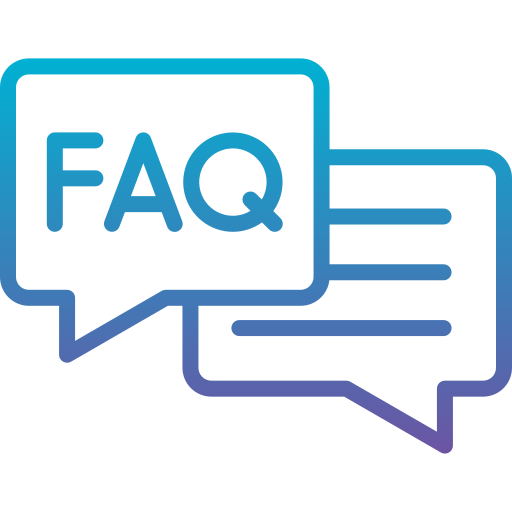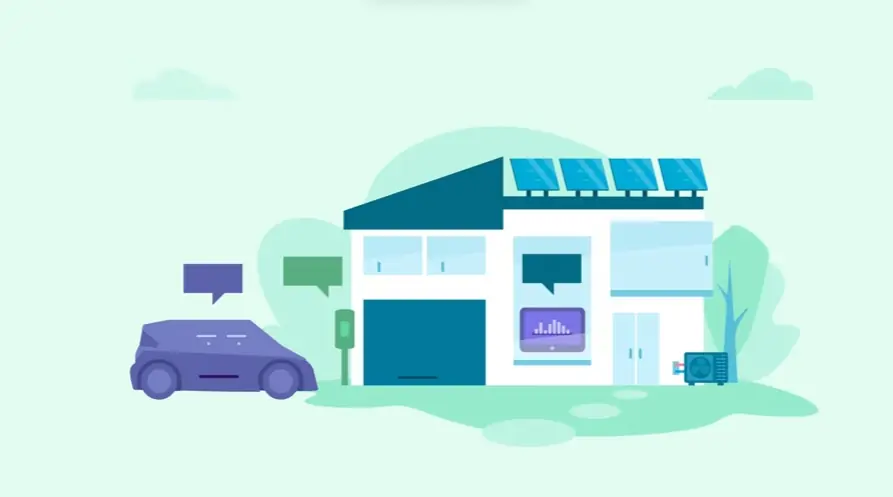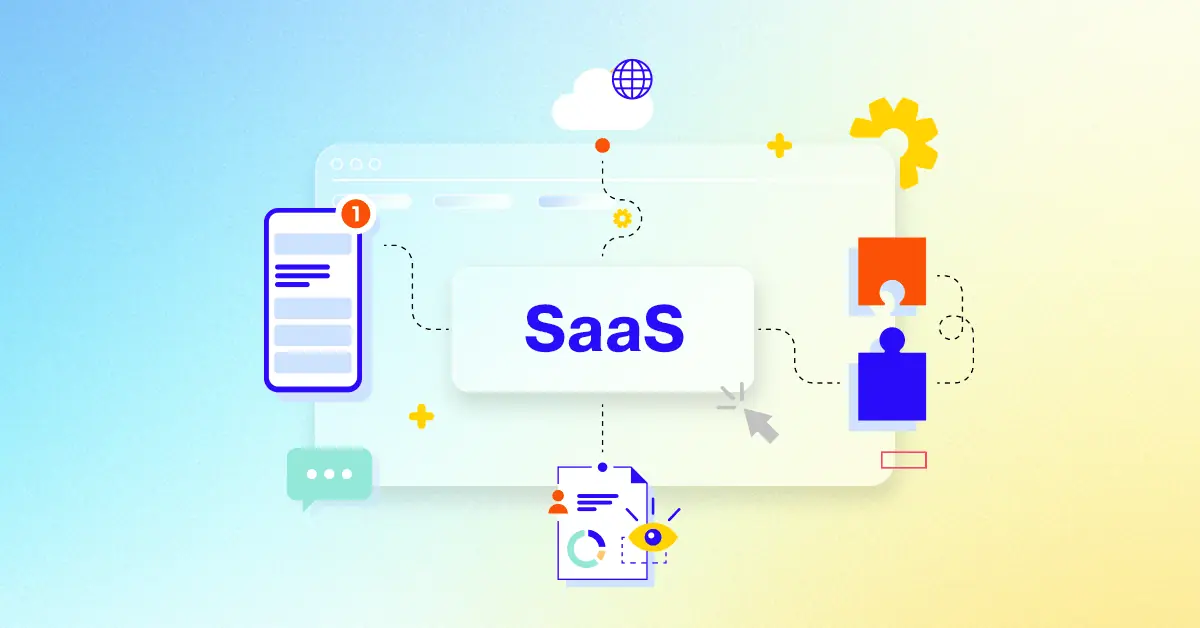How do we make users say "Aha!"? I'm constantly thinking about cutting through the noise, helping people truly grasp the power hidden within our app. Getting users to connect instantly, to feel the benefit, feels like the ultimate goal.
That's where seeing great 3D Animation Mobile App Video examples can spark ideas. They offer a unique way to visualize value, simplify complex ideas, and build that crucial engagement that drives real-world results for your product.
It’s crucial to plan ahead when it comes to high-quality video production. Discuss with our team, how you can get visual style, budget, timeline in sync.
Jai Ghosh
Video Producer at Advids
Let's talk

How does 3D animation explain complex mobile app features?
3D animation effectively explains complex mobile app features by adding depth, making abstract concepts tangible, and simulating multi-step processes dynamically. It breaks down intricate workflows and complex interactions visually, providing a clearer, more intuitive representation than static images or simple 2D methods, aiding user understanding.
What are the benefits of using 3D visualization in mobile app design?
Using 3D visualization in mobile app design offers key benefits: it allows early visualization for stakeholders, improves user comprehension of spatial layouts, and supports efficient design iteration. This process facilitates clear communication within the team and provides high-fidelity mockups for testing before significant development investment.
How can interactive 3D elements enhance mobile app user experience?
Interactive 3D elements enhance mobile app user experience by making exploration more engaging and adding immersion. They enable intuitive object manipulation, provide dynamic visual feedback, and allow richer navigation or data exploration, capturing attention and clarifying interactions for a more captivating user journey.
What are typical use cases for 3D animated mobile app walkthroughs?
Typical use cases for 3D animated mobile app walkthroughs include demonstrating core functionality before download, guiding new user onboarding, and explaining complex or hidden features. They are also used for showcasing unique aspects in marketing and providing visual, step-by-step tutorials within the app or on support channels.
How does 3D character animation impact engagement in mobile apps?
3D character animation significantly impacts engagement in mobile apps by adding personality and creating an emotional connection with users. Characters can guide users, provide engaging feedback, and celebrate achievements, breaking monotony and making the app feel more relatable, memorable, and distinct through unique animated personalities.
How is 3D visualization used for mobile app product demonstration?
3D visualization is used for mobile app product demonstration to clearly convey the app's value proposition and problem-solving capabilities. It visualizes app use in realistic contexts, showcases features aspirationally, and provides a high-impact visual overview for potential users or investors, effectively highlighting unique selling points.
What are the key steps involved in creating a 3D animated mobile app video?
Key steps in creating a 3D animated mobile app video include scripting and storyboarding, followed by detailed 3D modeling and asset creation. Animation brings these elements to life before the rendering process creates final frames. The process concludes with compositing and editing to combine elements and refine the final video flow.
What is the recommended length for a 3D animated mobile app explainer video?
The recommended length for a 3D animated mobile app explainer video typically ranges from 60-90 seconds, although videos under 60 seconds often see higher completion rates. The optimal duration depends on the complexity of the features being explained, prioritizing conciseness and efficiency to match online attention spans and convey information effectively.
What is the typical cost range for producing a 3D animated mobile app explainer video?
The typical cost range for producing a 3D animated mobile app explainer video varies widely, primarily based on length and visual complexity, including detail level and character animation. Production timelines and necessary revisions also factor into the final price, which is often estimated per finished minute based on these variables.
Can 3D animation simplify complex technical concepts within a mobile app?
Yes, 3D animation can effectively simplify complex technical concepts within a mobile app by visualizing abstract data flows or internal mechanisms in a tangible way. It breaks down complex systems into understandable parts, demonstrates underlying technology visually, and makes complex interactions relatable through clear spatial representation.
How 3D animation visualizes mobile app features
Visualizing mobile app features using a 3D Animation Mobile App Video requires strategic planning beyond simply showcasing screens. It involves crafting a compelling visual narrative that actively demonstrates the application's value proposition by placing it directly within real-world scenarios . Showing how the app integrates into users' existing workflows or solves specific, relatable problems significantly increases its perceived usefulness and relevance. Incorporating visual social proof , perhaps brief glimpses of recognizable logos of companies already using the app effectively, rapidly builds audience trust and credibility.
Measuring the true impact of this visual communication goes deeper than basic view counts. Tracking the costs associated with producing a 3D app demo video against tangible outcomes like increased qualified leads or a reduction in customer support inquiries indicates a clearer return on investment . Analyzing how potential users interact with the visual content offers granular insights. Tools provide data showing which specific segments captured attention, were rewatched, or caused viewers to disengage, allowing for data-driven refinement .
Strategic optimization ensures the visual message resonates across diverse viewing environments . Content intended for fast-moving social feeds demands immediate visual hooks and clear messaging understandable even without sound, often utilizing text overlays. Conversely, a video embedded on a dedicated product page can offer more detailed visual explanations, assuming higher initial viewer interest. Continuous refinement through testing different visual elements helps maximize overall effectiveness.
- Integrating clear, action-oriented visual prompts directly into the animation guides viewers toward desired next steps like "Start Your Free Trial."
- Analyzing viewer interaction data through visual analytics, including heatmaps, reveals confusing segments within the animated sequence for targeted improvement.
- A/B testing different visual components such as thumbnail images, the opening visual sequence, or the presentation of the call to action identifies what visually resonates most effectively.
- Adapting visual content length and style based on platform ensures the app's features are communicated optimally whether viewed on social media feeds or a product website.
Selecting 3D animation style for mobile app videos
Selecting the appropriate 3D animation style transcends mere aesthetics; it forms a crucial part of the app's brand identity and connects emotionally with target users. Developing a visual narrative helps communicate the app's purpose and benefits effectively . Crafting a compelling 3D app explainer animation allows teams to vividly portray the core value proposition, making complex ideas accessible through engaging visuals .
Showcasing the app's capabilities through real-world scenarios demonstrates its tangible value . Illustrating how the product integrates into existing workflows or solves specific user problems elevates its perceived utility. Incorporating social proof, such as mentioning recognizable company logos employing the app, quickly builds credibility and trust. A 3D app functionality video effectively demonstrates features within these relevant contexts, highlighting tangible value.
The video's conclusion presents a vital opportunity for driving action . Clear and specific calls to action are paramount. Moving beyond generic prompts requires action-oriented text like "Start Your Free Trial" or "Request a Demo," aligning with the viewer's position in their journey. Effective videos clarify features upfront, potentially reducing support inquiries later. Focusing on driving action at the end is key.
- Measuring return on investment tracks production costs against generated value like increased qualified leads or reduced sales cycles.
- Analyzing viewer behavior using heatmaps reveals exactly which video segments capture or lose attention.
- A/B testing various elements like thumbnails or CTA wording uncovers what resonates most with the audience.
- Optimizing for different platforms means adapting length and style for viewer intent and environment, such as sound-off social feeds.
Demonstrating mobile app UI using 3D animation
Businesses often utilize visual media to connect with audiences. Crafting a compelling 3d app marketing video serves as a primary tool in this effort, moving beyond static images to dynamic presentations. They demonstrate functionality and user benefits by placing the app interface within relatable scenarios. Showing how the product integrates into existing workflows or solves specific problems elevates its perceived value significantly.
Beyond marketing, the video acts as a comprehensive 3d app showcase video, detailing functionality for potential users. Guiding viewers toward the next step requires clear, action-oriented calls to action. Generic prompts offer little direction; instead, specific text like "Start Your Free Trial" or "Download the Report" connects directly to the viewer's journey and the video's objective. Measuring success means tracking production costs against generated value, quantifying impact through increased qualified leads or reduced support inquiries from better-informed users.
Understanding audience interaction refines video effectiveness. Analyzing viewer behavior using tools like heatmaps reveals exactly which parts of the interface demonstration hold attention or cause drop-offs. This granular data pinpoints confusing segments. Incorporating social proof, such as displaying recognized company logos or user statistics, builds credibility swiftly. Furthermore, A/B testing various video elements – like the opening seconds or the call to action wording – provides insights into audience preferences and optimizes performance. Finally, tailoring the video approach for different platforms considers viewer intent and environment, ensuring maximum impact whether on social feeds or a product page.
Animating mobile app user flow effectively
Effective mobile app animation moves beyond simply showing features. It involves thoughtfully guiding potential users through the application experience itself, encouraging specific actions. Crafting compelling visuals that showcase the app's flow helps users understand how it solves their needs. Using 3D app UI animation can visually clarify complex interactions, making navigation intuitive and appealing.
Strategic calls to action are crucial endpoints for these animations. Generic prompts like "Learn More" lack impact. Action-oriented text such as "Start Your Free Trial" or "Download the Report" performs better, directly aligning with the viewer's journey objective. Measuring success goes beyond views; it tracks the return on investment. This means connecting production costs to valuable outcomes like increased qualified leads or fewer support queries because users understood features through the video demonstration.
Demonstrating real-world scenarios significantly boosts relatability. Showing the app integrated into daily tasks or specific industry workflows increases its perceived value. Creating a 3D app walkthrough video allows viewers to visualize navigating the app step by step. Analyzing viewer behavior provides deep insights; heatmaps reveal exactly where interest peaks or drops, pinpointing confusing segments needing refinement. Incorporating social proof, like client logos, quickly builds credibility.
- Tailor calls to action precisely to the video's purpose and the viewer's point in their journey.
- Utilize real-world contexts to show the product solving problems relevant to the user.
- Implement tools for analyzing viewer behavior to refine content based on engagement data.
- Conduct A/B testing on elements like thumbnails, intros, or CTAs to optimize conversion rates.
Strategic purpose of 3D animation for mobile apps
Crafting an effective App 3D animation video involves focusing on its strategic purpose beyond simple feature tours. They serve as potent tools when aligned with specific marketing and sales objectives. Simply showcasing functionality is insufficient; the aim is to guide viewers towards tangible actions and demonstrate clear value within their own context.
Maximizing the impact of these videos requires attention to the viewer's journey. Implementing specific calls to action proves far more effective than vague prompts. Consider action-oriented text like "Start Your Free Trial" or "Request a Demo," directly correlating with conversion goals. This clarity directs potential users on the next steps they should take.
Measuring success provides valuable insights. Beyond simple view counts, track key performance indicators such as increased qualified leads, reduced sales cycle times, or a decrease in support tickets. Analyzing viewer engagement data gathered from a 3D app explainer video offers critical insights into clarity and interest points, identifying where viewers might disengage.
- showcasing features within real-world scenarios enhances relatability and perceived value.
- Demonstrating how the app integrates into existing user workflows makes adoption seem seamless.
- Incorporating social proof, such as showcasing logos of recognizable companies using the app, builds credibility quickly.
- Employing A/B testing on elements like thumbnails or script variations refines content for maximum impact and conversion.
Ultimately, aligning these animated assets with clear objectives, measuring their performance against business outcomes, and continuously optimizing based on user interaction ensures they function as powerful drivers of mobile app adoption and success.
Integrating mobile app screens into 3D environments
Stepping beyond simple screen overlays, creators integrate mobile app screens directly into dynamic 3D environments . They build virtual spaces mirroring user surroundings, from busy offices to serene homes, grounding the application within relatable real-world scenarios. This approach effectively demonstrates how the product fits seamlessly into existing workflows, highlighting its value by showing its use in context. Designing the surrounding 3D setting thoughtfully enhances this connection, making the demonstration more impactful for viewers.
Within these dynamic spaces, creators craft a compelling 3D app feature showcase, illustrating capabilities in action. Attention to detail extends to the 3D app interface animation, ensuring user interactions are clear and intuitive within the rendered setting. Viewers observe how navigating menus or using specific tools works, making the app's functionality easily understandable. Incorporating subtle social proof, like displaying recognizable logos within the environment, further builds credibility.
Ultimately, these videos aim to drive viewer action. They understand the need for clear, specific calls to action beyond generic prompts. Action-oriented text, such as "Start Your Free Trial" or "Request a Demo", directly guides the viewer on the next step. Visually integrating this precise wording into the final 3D scene, perhaps displayed on a device screen or within the environment itself, reinforces the message.
- Measuring the return on investment involves tracking production costs against tangible value generated, such as increased qualified leads or decreased support volume.
- Analyzing viewer behavior through heatmaps and attention tracking tools provides granular data on engagement with the 3D showcase.
- Conducting A/B tests on different elements, including variations in the 3D environment or screen presentation, reveals what resonates most effectively.
- Optimizing content presentation and length for distinct platforms, considering viewer intent and environment, maximizes reach and impact.
This integrated approach, combining immersive visuals with clear calls and data analysis, elevates app video effectiveness.
Using 3D device models in app animation
Creating effective digital assets, perhaps a compelling 3D app promo video, involves strategically showcasing software operating seamlessly within familiar 3D device models. This approach grounds its presentation realistically. Showcasing functionality through authentic real-world scenarios, illustrating workflow integration , significantly increases perceived value potential users evaluating solution. This strategic method moves beyond simple feature display towards showing practical, everyday utility.
Beyond visual realism, animation effectiveness hinges strategic elements. Employing clear, action-oriented calls to action proves crucial. Instead needing viewer guesswork, precise directives guide next steps. Prompts like "Start Your Free Trial" or "Request Demo" outperform generic "Learn More", aligning better viewer journey stage. Integrating social proof, perhaps brief flashes recognizable customer logos compelling user statistics, quickly builds vital credibility trust audience.
Measuring success involves tracking value-generated ROI. Assess impact qualified leads, reduced sales cycle length, decreased support queries users understanding features through video. Analyze viewer behavior using tools like heatmaps attention tracking. Reveal segments viewers watch, rewatch, skip. This granular data identifies confusing points interest drops, crucial refinement. A/B testing differing elements – thumbnail, initial seconds, CTA wording, script nuances – offers significant insights optimizing impact driving higher conversions. Optimizing platform delivery matters too. An informative 3D app walkthrough animation on product page suits greater detail higher-intent viewers, contrasting social media needs instant engagement, possibly sound-off understanding via text overlays, shorter run times.
- Ground apps realism using 3D device models showing everyday use.
- Implement specific, action-oriented calls action guiding viewers.
- Measure ROI tracking actual business value like lead quality support ticket reduction.
- Utilize viewer analytics A/B testing refining content maximizing conversion potential. Incorporating Social proof builds trust.
Applying these techniques ensures app animations not only inform but actively drive desired audience action measurable results.
Crafting narrative with 3D app animation
Crafting compelling narratives with animation goes beyond showcasing features; it involves connecting with viewers on a relatable level. Businesses utilize real-world scenarios to demonstrate how their product seamlessly integrates into daily life or specific industry tasks. Showcasing how a product fits existing user tasks through a 3D app workflow animation increases its perceived value, making the solution feel indispensable rather than just an option.
To guide viewers toward desired outcomes, clear and specific calls to action are paramount. Generic prompts often fail to convert interest into action. Instead, employ action-oriented text like "Start Your Free Trial" or "Request a Demo," aligning the message with the video's objective and the viewer's place in their journey. Measuring return on investment for these animations requires tracking production costs against generated value, such as acquiring qualified leads or decreasing support inquiries.
Optimizing animation effectiveness involves understanding how viewers interact with the content. Analyzing viewer behavior through tools like heatmaps reveals exactly which parts capture attention and where interest might drop off. Incorporating social proof, such as brief flashes of recognizable company logos or statistics on satisfied users, quickly builds credibility and trust. Continuously refining animations through A/B testing different elements yields significant insights into what resonates most and drives higher conversions. When creating a 3D mobile app marketing video, adapting content for platform differences and viewer intent ensures maximum impact.
- Use action-oriented CTAs like "Download the Report" relevant to viewer journey.
- Key ROI metrics include increased qualified leads and reduced sales cycle length.
- Granular data from heatmaps helps identify confusing segments.
- Showcase well-known company logos to build trust quickly.
Strategic narrative building, coupled with clear calls to action and data-driven optimization, transforms animations into powerful tools that effectively engage audiences and drive measurable results.
Ensuring 3D animation aligns with brand
Ensuring 3D animation aligns seamlessly with brand identity proves crucial. This holds true whether developing an animated app onboarding video designed to welcome new users or an animated app overview video showcasing core features. Visual style, tone, and messaging must resonate with brand guidelines, ensuring the animation enhances overall brand perception rather than conflicting with it.
Presenting features through real-world scenarios, demonstrating how the app integrates into existing workflows, builds relevance. This shows value specific to a user's tasks or industry in a context consistent with the brand's visual narrative, making the product tour more relatable and believable for the target audience.
Measuring the effectiveness of these Branded animations involves tracking performance against business objectives. Analyzing viewer behavior reveals engagement patterns, providing granular data to identify areas for refinement and confirm the messaging is resonating as intended.
- Use clear, action-oriented calls to action specific to the video's goal and audience journey.
- Build trust quickly by incorporating social proof, such as relevant company logos or user statistics.
- Continuously optimize performance through A/B testing different elements like thumbnails or CTAs.
- Tailor video content and messaging for platform-specific viewer intent and viewing environments.
Strategic alignment and ongoing optimization ensure 3D app videos effectively support brand goals and deeply engage target audiences.
Author & Editor Bio
A video producer with a passion for creating compelling video narratives, Jai Ghosh brings a wealth of experience to his role. His background in Digital Journalism and over 11 years of freelance media consulting inform his approach to video production. For the past 7 years, he has been a vital part of the Advids team, honing his expertise in video content planning, creation, and strategy.
His collaborative approach ensures that he works closely with clients, from startups to enterprises, to understand their communication goals and deliver impactful video solutions. He thrives on transforming ideas into engaging videos, whether it's a product demo, an educational explainer, or a brand story.
An avid reader of modern marketing literature, he keeps his knowledge current. Among his favorite reads from 2024 are "Balls Out Marketing" by Peter Roesler, "Give to Grow" by Mo Bunnell and "For the Culture" by Marcus Collins. His results-driven approach ensures that video content resonates with audiences and helps businesses flourish.




